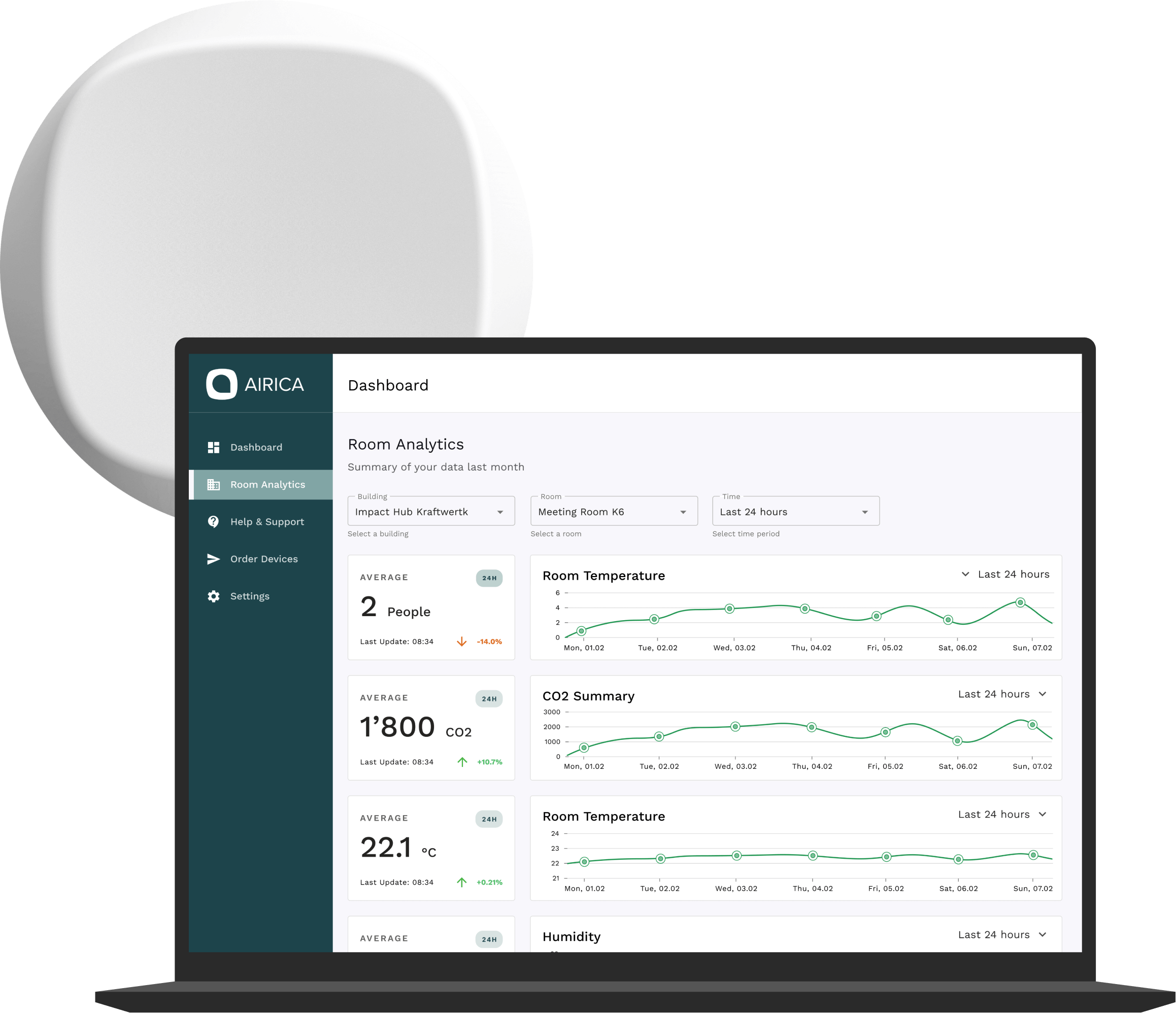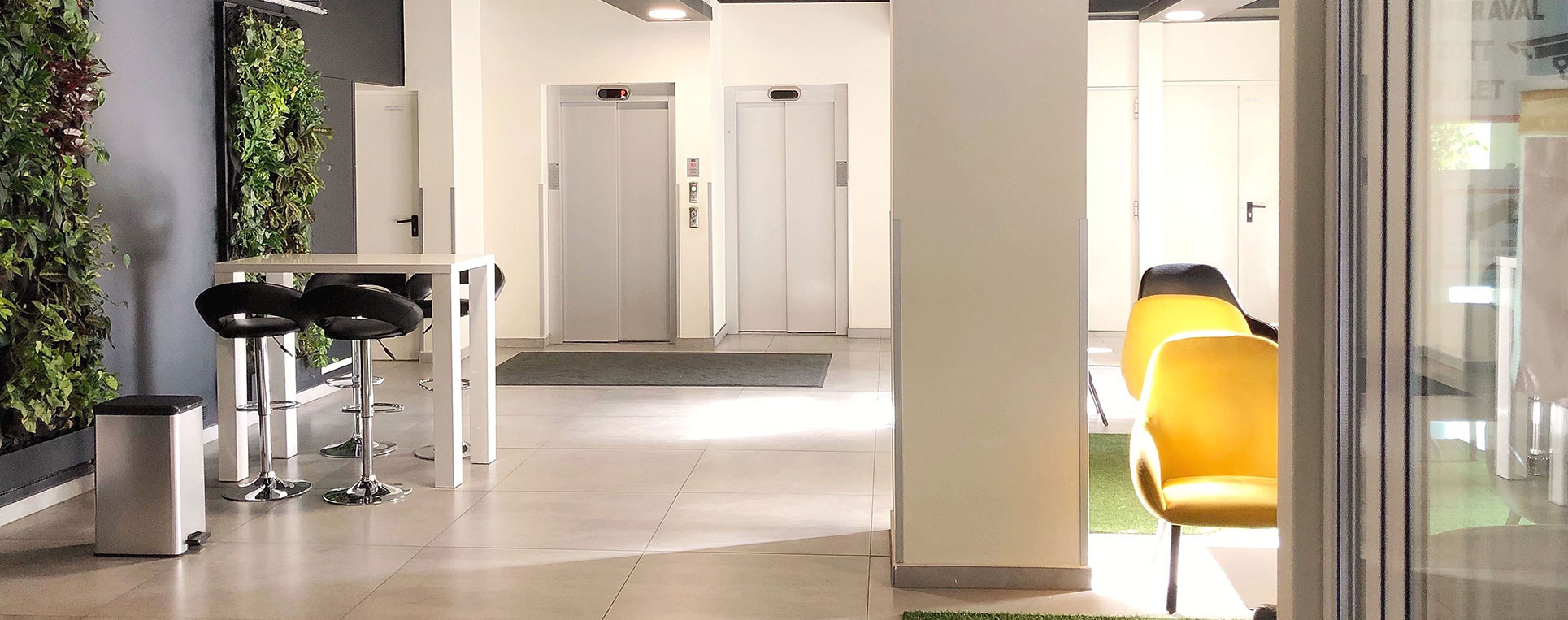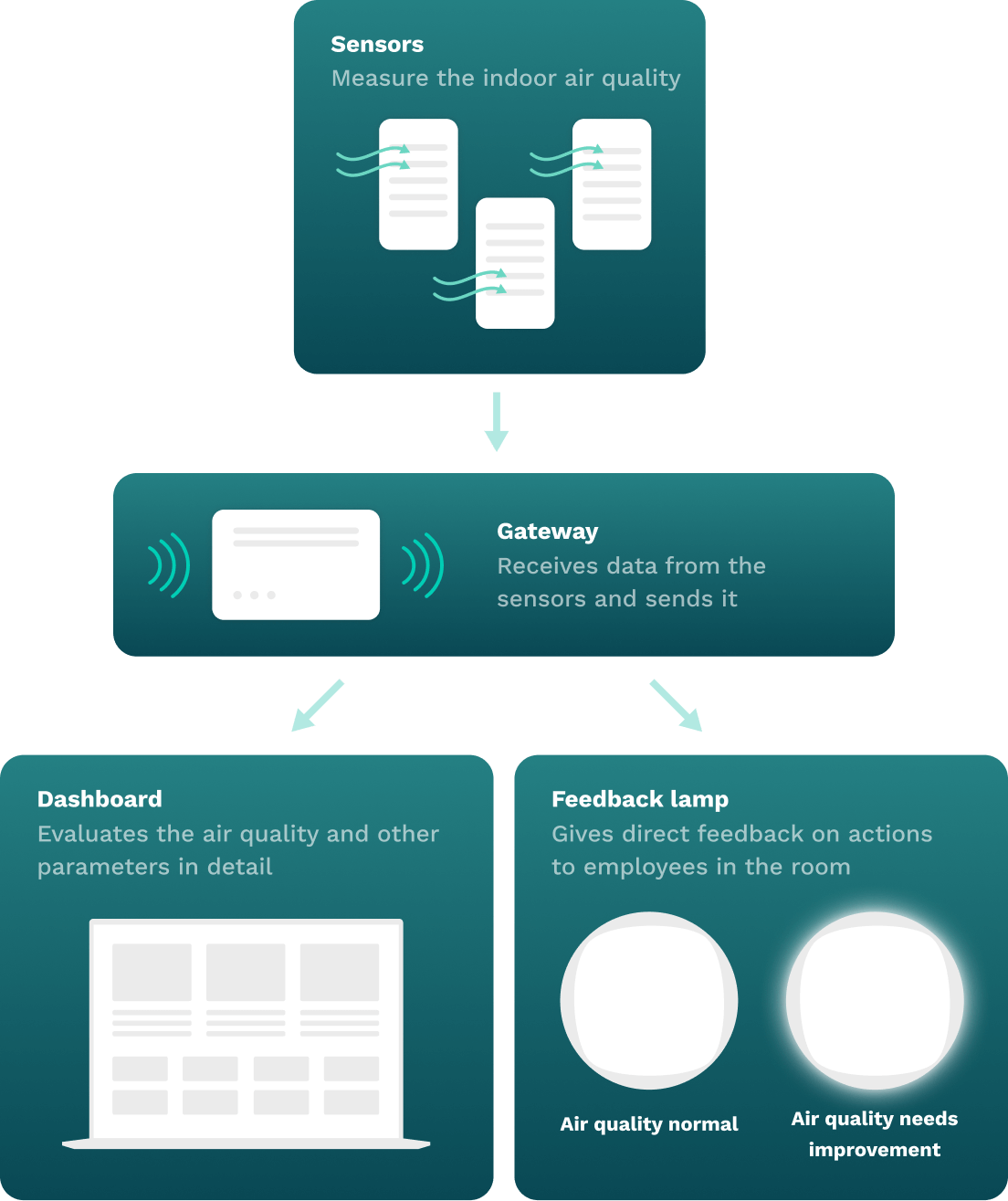Solution
Airica’s industrial grade sensors measure CO2, temperature, pressure, humidity, tVOC, PM1, 2.5, 4 and 10.
The data is streamed to the cloud using LoRaWAN® where it is analyzed by proprietary machine learning algorithms. Actionable recommendations about room health and space utilization are provided in a dashboard.
The generated insights can be directly integrated into third party systems (e.g. Slack or Outlook Calendar) via the Airica API. A real-time designer lamp gives direct feedback about indoor air quality to the occupants in the room.
Airica can also be used to retrofit and increase the efficiency of existing ventilation systems with demand-based control.




